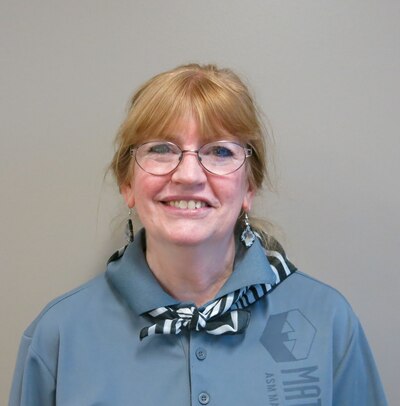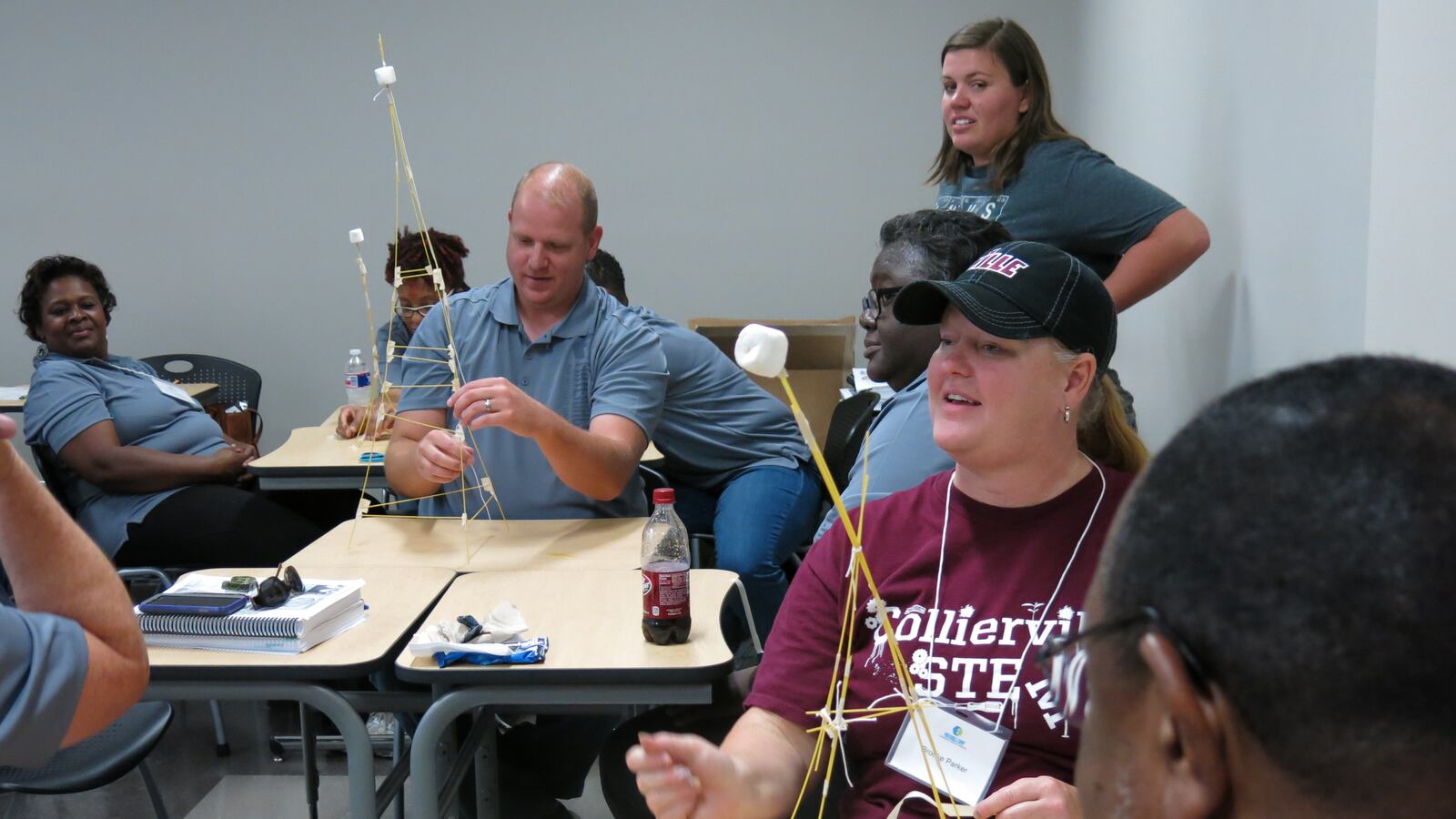Translating science into everyday life can be challenging for even the most seasoned teachers. But for 40 Memphis-area teachers attending a week-long science camp last week, they’ll return to the classroom better prepared to inspire their students to be scientists every day.

During the ASM Materials Camp at Southwest Tennessee Community College, the teachers were coached by Beth Eddy, a former chemical researcher who has taught science in Ohio schools for 35 years.
Amid a bevy of scientific experiments, lectures and projects, Eddy spoke with Chalkbeat about how to improve science literacy, especially related to materials science, which explores the chemical makeup of materials, their engineering applications and manufacturing processes.
What is your favorite class to teach?
It’s between AP Chem and Material Science. AP Chem is challenging with the concepts. It just really stretches you to be creative with problem-solving, and the material science because it’s cutting-edge technology. It’s stuff that’s happening right now.
I’ve had (the material science) class since 2008. We were the first class in central Ohio to have a material science class, and now there are a bunch of them popping up all over the country.
What is one of your favorite lessons?
I like the sparkler lesson a lot — we did that this week. (I teach it to) my AP chem and material science classes. They actually learn to make sparklers … using titanium, magnesium, aluminum, iron, that’s the fuel part, and then we use potassium perchlorate.
If I’m doing it for chemistry … we’re looking at when the electrons and atoms get excited, they jump up. And then when they fall back down, they give off various wavelengths of light. And so we’re looking at the color of the sparkler.
Then if we’re doing it for material science, we’re looking at how the sparks are different depending on the metal. You can identify the metal by its different sparks — like titanium makes these giant white sparks, and iron makes these cute little yellow ones that kind of branch and sparkle off, and aluminum makes little tiny sparkles.
What do you hope teachers gain from this workshop?
I hope they gain some activities that they can do with their students to inspire them so they can say, “Hey look how this is used in the real world. Look at this, this isn’t just in a textbook.” And that the students would be inspired to go into science and engineering — or at least they appreciate it more, because not everybody should go into science and engineering.
What is your favorite part about teaching?
When students have a joy of learning. You know, they see something and they go, “Oh! Really? That’s how it works?” Or, it’s that thing inside where they go, “Wow, that’s really cool.” That’s my favorite part. Absolutely, hands down.
Describe a strategy you use in the classroom that helps your students learn.
After 33 years, I changed how I was teaching. I have a blended classroom now. It was very difficult to make that transition. I had to put a lot of work into it, but I feel that it’s preparing (my students) for life better now. They’re more in charge of their educations.
I do everything online. … So when you walk in my classroom, somebody over here is watching a video with their earbuds in, somebody back there is doing a lab, somebody is doing a lab over here … and they’re all kind of working at their own pace, in their own order of things. I have a suggested order, that way they have access to whatever they need.

